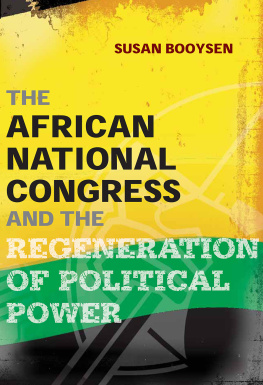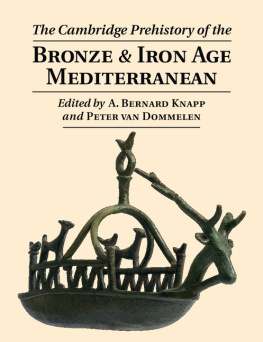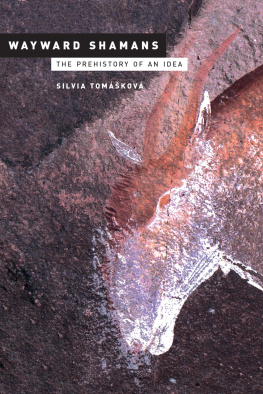Susan Kent - Gender in African Prehistory
Here you can read online Susan Kent - Gender in African Prehistory full text of the book (entire story) in english for free. Download pdf and epub, get meaning, cover and reviews about this ebook. year: 2000, publisher: Rowman & Littlefield, genre: Romance novel. Description of the work, (preface) as well as reviews are available. Best literature library LitArk.com created for fans of good reading and offers a wide selection of genres:
Romance novel
Science fiction
Adventure
Detective
Science
History
Home and family
Prose
Art
Politics
Computer
Non-fiction
Religion
Business
Children
Humor
Choose a favorite category and find really read worthwhile books. Enjoy immersion in the world of imagination, feel the emotions of the characters or learn something new for yourself, make an fascinating discovery.

- Book:Gender in African Prehistory
- Author:
- Publisher:Rowman & Littlefield
- Genre:
- Year:2000
- Rating:3 / 5
- Favourites:Add to favourites
- Your mark:
- 60
- 1
- 2
- 3
- 4
- 5
Gender in African Prehistory: summary, description and annotation
We offer to read an annotation, description, summary or preface (depends on what the author of the book "Gender in African Prehistory" wrote himself). If you haven't found the necessary information about the book — write in the comments, we will try to find it.
Gender in African Prehistory — read online for free the complete book (whole text) full work
Below is the text of the book, divided by pages. System saving the place of the last page read, allows you to conveniently read the book "Gender in African Prehistory" online for free, without having to search again every time where you left off. Put a bookmark, and you can go to the page where you finished reading at any time.
Font size:
Interval:
Bookmark:
GENDER in AFRICAN
PREHISTORY
I dedicate this book to my nephews and niecesDanny, Lauren,
Sammy, and Julia Kent. I hope that by understanding gender in the
past, they will be able to better understand gender today and in their
futures, regardless of its cultural construction in Western society.
Susan Kent
Edited by
Susan Kent

Copyright 1998 by AltaMira Press, a Division of Sage Publications, Inc.
All rights reserved. No part of this book may be reproduced or utilized in any form or by an means, electronic or mechanical, including photocopying, recording, or by any information storage and retrieval system, without permission in writing from the publisher.
For information address:
AltaMira Press
A Division of Sage Publications, Inc.
1630 North Main Street, Suite 367
Walnut Creek, CA 94596
SAGE Publications Ltd.
6 Bonhill Street
London EC2A 4PU
United Kingdom
SAGE Publications India Pvt. Ltd.
M-32 Market
Greater Kailash 1
New Delhi 110 048
India
PRINTED IN THE UNITED STATES OF AMERICA
Library of Congress Cataloging-in-Publication Data
Gender in African prehistory / edited by Susan Kent.
p. cm.
Includes bibliographical references and index.
ISBN: 978-0-7619-8968-4
1. Sex roleAfrica. 2. Prehistoric peoplesAfrica. 3. AfricaAntiquities.
4. ArchaeologyAfrica. I. Kent, Susan, 1952
GN861.G46 1998
305.3096dc21
97-33728
CIP
98 99 00 01 02 03 10 9 8 7 6 5 4 3 2 1
Production by Labrecque Publishing Services
Editorial Management by Joanna Ebenstein
Cover Design by Joanna Ebenstein
|
PERSPECTIVES OF GENDER FROM |
|
|
|
|
|
|
|
|
|
|
|
|
|
|
|
 Part One
Part One


Gender in archaeology has become a fashionable topic, a decade later than when it was first popular in cultural anthropology. This is almost two decades after gender research became common in other social science disciplines. Environmental reconstructions, however, remain popular and have been emphasized in archaeology over the past 30 to 40 years. Many archaeologists spend their time studying paleoenvironments and extant environments, in contrast to studying sharing, gender, stratification, and other facets of culture (e.g., Erlandson 1994; Kelley 1995). Although environments, depending on ones theoretical orientation, may affect culture, they are not themselves culture. Environments may be modified by humans, yet they are not created by them in the sense that culture is. Culture, on the other hand, is not only created and perpetuated by humans, it is also modified by them. Gender in African Prehistory is a book about past cultures. Some of its authors present more environmental data than others, but each chapter deals primarily with how gender is expressed in the archaeological record and why patterns change through time.
As a result of the emphasis on environmental reconstructions over the past three or four decades, we archaeologists have come a long way in determining paleoenvironmental factors on both the macro- and microscopic levels. Had we spent as much time, money, and effort on studying gender and sociopolitical organization, we probably would have as much knowledge about prehistoric gender relations as we currently have about ancient environments. Gender in African Prehistory is the first book that exclusively attempts to examine gender using the African archaeological record. While the geographical region covered in this volume is limited to Africa, the time periods, the topic of gender, the methods, and the theoretical orientations are not limited to that continent.
While the sex of individuals is a basic biological division among humans, gender is the cultural construction of that division. That is, humans use their conceptions of gender to define and categorize the biological sexes. Individuals understand and legitimize their perceptions of sex through their conceptualization of gender and gender relations. Gender is imbued in almost every facet of culture found in all modern human societies (we cannot be sure about archaic humans or earlier hominids). Although recognized by most archaeologists as an important organizing principle of culture, gender has historically not been well studied in archaeology. However, the situation is changing with the publication of a variety of books that examine gender (e.g., Claassen 1991; Claassen and Joyce 1997; Gero and Conkey 1991; Nelson 1997; Walde and Willows 1991; Wright 1996). With few exceptions, some including authors in this book, the lack of focus on gender is particularly noticeable in the research of African prehistory. Archaeology in Africa has concentrated more on reconstructing paleoenvironments, locating and understanding the earliest hominids, analyzing faunal remains and lithic artifacts, and studying the exploitation of economic resources. The dearth of gender research, again with the exception of many of the following authors, seems particularly conspicuous when compared to archaeology conducted on other continents. Gender in African Prehistory attempts to fill this void. The book provides methods and theories for delineating and discussing prehistoric gender relations while understanding their change through time, endeavors that are relevant to all geographic areas and time periods.
Gender is defined here as the interaction between females and males as constructed by culture. Women and men are viewed as reacting to and interacting with one another, even in those societies with complementary and nonoverlapping gender divisions of labor. To some anthropologists gender means women. However, women today and in prehistory never operated in isolation from men. There often are facets of culture that exclude one sex, like secret societies or the use of space, but even those are in response to how men and women interact overall. Often such exclusion is important in defining separate gender roles; that is, they are a reaction to one another. In fact, femininity can best be understood in opposition to masculinity and vice versa. Thus, the activities of both men and women are essential to the understanding of gender and, when possible, both are examined in the following chapters. For some authors, it was necessary that they revise basic assumptions concerning the role of each sex in the activities that contributed to the archaeological record before analyzing site data (e.g., Segobye, ). These new analyses and revised thinking made writing the chapters a stimulating challenge, leading the authors to think in new directions. Thus, this book was exciting to write and, I hope, is exciting to read.
Next pageFont size:
Interval:
Bookmark:
Similar books «Gender in African Prehistory»
Look at similar books to Gender in African Prehistory. We have selected literature similar in name and meaning in the hope of providing readers with more options to find new, interesting, not yet read works.
Discussion, reviews of the book Gender in African Prehistory and just readers' own opinions. Leave your comments, write what you think about the work, its meaning or the main characters. Specify what exactly you liked and what you didn't like, and why you think so.








